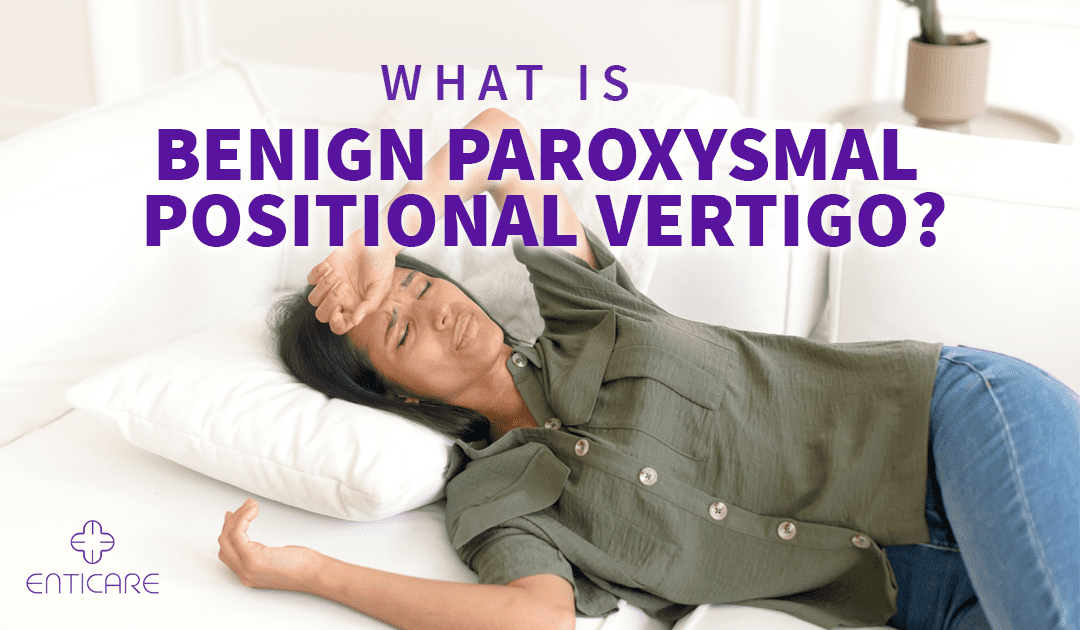Benign paroxysmal positional vertigo (BPPV) is a prevalent vestibular disorder impacting the inner ear. Recognized by brief episodes of vertigo—spinning or whirling sensations—BPPV can be both frustrating and debilitating. This blog post delves into the causes, symptoms, and treatment options for BPPV.
Causes of BPPV
BPPV is caused by tiny calcium crystals called otoliths that become dislodged from their normal location in the inner ear and float around in the fluid-filled canals. These otoliths can stimulate the sensitive hair cells in the inner ear, sending false signals to the brain that the body is moving when it is not. This can cause the feeling of spinning or dizziness associated with BPPV.
- The exact cause of BPPV is not always clear, but it can be associated with a variety of factors, including:
- Head injuries: Head injuries, such as a concussion or whiplash, can dislodge the otoliths and cause BPPV.
- Aging: As people age, the inner ear can become less stable and more prone to dislodging the otoliths.
- Inner ear disorders: Inner ear disorders, such as Meniere’s disease or labyrinthitis, can also increase the risk of developing BPPV.
- Prolonged bed rest: Prolonged bed rest or immobilization can cause the otoliths to shift and lead to BPPV.
Symptoms of BPPV
The hallmark symptom is a brief episode of spinning or whirling triggered by changes in head position. Additional symptoms may include:
- Nausea or Vomiting: The spinning sensation may induce nausea or vomiting.
- Loss of Balance: Difficulty maintaining balance, increasing the risk of falls.
- Anxiety: The unpredictable nature of vertigo can cause stress and anxiety.
- Fatigue: Constant dizziness and disorientation can lead to fatigue.
- Visual Disturbances: Rapid eye movements (nystagmus) and visual disturbances may occur.
- Balance Problems: Impaired balance leading to falls or difficulty walking.
Treatment Options
Treatment typically involves specific head movements, such as the Epley maneuver or canalith repositioning procedure, aiming to relocate displaced otoliths. Other treatment options may include:
- Medications: Vestibular suppressants or anti-nausea drugs may be prescribed to alleviate symptoms.
- Lifestyle Changes: Adjustments like avoiding sudden head movements or sleeping with the head elevated can reduce symptoms.
- Surgery: In rare cases, surgery may be recommended for inner ear disruption resistant to other treatments.
Prevention of BPPV
While there’s no foolproof prevention, certain measures may reduce the risk:
- Protecting the Head: Wearing helmets during high-risk activities can prevent head injuries that may lead to inner ear disruption.
- Treating Ear Infections: Prompt treatment of ear infections can prevent inner ear damage.
- Limiting Alcohol and Caffeine: Excessive consumption of alcohol or caffeine may impact the inner ear, increasing the risk.
In conclusion, BPPV is a common vestibular disorder that can cause significant symptoms of vertigo, dizziness, and imbalance. However, with proper diagnosis and treatment, most patients can experience significant improvement in their symptoms and quality of life. If you are experiencing symptoms of BPPV, it is important to speak with our providers at Enticare to determine the best course of treatment for your individual case. Don’t hesitate to call us at 480-214-9000.

